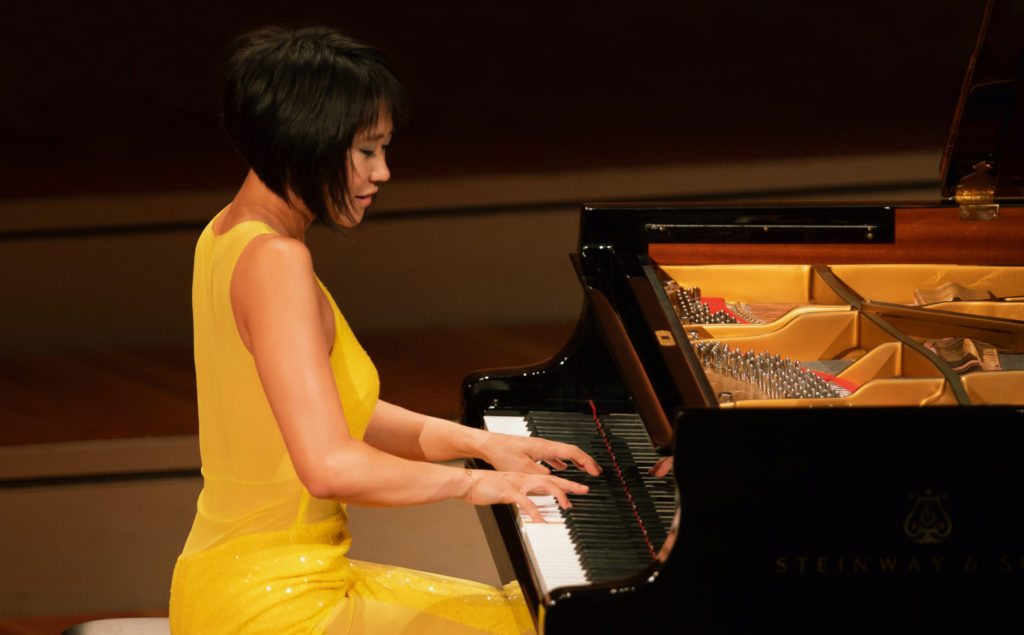The Art of Interpretation: How to Play with More Expression and Musicality
Learn how to turn notes into music with heartfelt expression. This blog explores the art of interpretation at the piano - from mastering dynamics and rubato to connecting emotionally with your piece. Whether you're playing Bach or Chopin, learn how to bring your unique voice to the keys and make every performance truly sing.
SKILL DEVELOPMENTMUSIC EDUCATIONLEARNING STRATEGIESMUSIC PRACTICE
The Art of Interpretation: How to Play with More Expression and Musicality
We’ve all heard piano performances that technically hit every note, but somehow feel… flat. And then there are those magical performances that seem to breathe - where the music speaks to you. What makes the difference? It’s not just about the notes. It’s about the interpretation - the way a pianist brings life, emotion, and personality into the music.
In this blog, we’ll explore how you can develop your own expressive style and play with more musicality, whether you're working through your first Chopin Nocturne or trying to make that Bach prelude shimmer with feeling.


What is “Interpretation,” Anyway? 🤔
At its core, interpretation is your personal take on the music. It’s how you choose to shape the sound: the phrasing, the dynamics, the tempo rubato (slight push and pull of time), and even the tone you produce. It’s your musical voice, layered over the composer’s notes.
Step 1: Know the Score Inside and Out 📜
Before you can get expressive, you need to know what the composer actually wrote. Study the markings on the page: dynamics, articulation, tempo changes, phrasing lines. Try to understand the form and structure - where are the climaxes, the cadences, the repeats? This part is like preparing a canvas before you start painting. You’re building a strong foundation so that when you do start experimenting, you’re doing it with purpose, not guesswork.
🎯 Try this: Play your piece exactly as written - no extra flourishes or tempo bending. This "straight" version will help you hear what's already in the music before adding your own ideas.
Want to learn musicality? Listen to musical players. Pick a few professional recordings of your piece and notice how each artist shapes the phrases. How do they build intensity? Where do they breathe or linger? Do they bring out a hidden melody line? You’re not trying to copy forever, but imitation is a great way to develop your ear and expand your expressive toolkit.
🎧 Pro tip: Listen actively. Try to sing along with the phrasing or clap out the rhythm. If something moves you, pause and ask, “Why did that sound so beautiful?” Then try it on your own piano.
Step 2: Listen and Imitate (At First) 👂🏻
Music is emotional storytelling. Whether it’s joy, longing, playfulness, or heartbreak - feel it as you play. You don’t have to perform theatrically, but your inner emotional world should be alive and flowing through your fingers.
Ask yourself:
What is the mood of this piece?
What story could this music be telling?
How do I feel when I play this section?
🎭 Fun exercise: Give your piece a backstory. Pretend you're scoring a movie scene - what’s happening? Are you playing a love confession, a stormy argument, or a memory of childhood?
Step 3: Connect With the Emotion 🎭
Dynamics (volume changes) and rubato (flexible timing) are the heart of expressive playing. Too often, students treat them like decorations. But used well, they can transform a flat performance into something truly captivating. Think of dynamics like dialogue - whispers, shouts, and everything in between. And rubato? It’s the art of breathing with the music. A slight pause before a phrase can make it land with more impact. A gentle push forward can create momentum and excitement.
🌀 Try this game: Play a simple melody like “Twinkle Twinkle” using extreme dynamics and rubato. Make it dramatic. Make it tender. Make it silly. Then bring that same level of emotional range to your real repertoire.
Step 4: Master the Art of Dynamics and Rubato 🔈
Expressive playing isn’t just a finger job - it’s full-body communication. Watch great pianists, and you’ll notice how their arms, shoulders, and even breath help shape the music. You don’t need to flail or overact, but some physical engagement helps the sound carry emotional weight. Sit tall, breathe deeply, and let your hands flow naturally. Tension blocks expression, so aim for a relaxed and responsive body.
🧘🏻♀️ Quick tip: Try playing a short section while focusing only on how your arms feel. Are you stiff or loose? Do your movements reflect the emotion you want to express?
Step 5: Use Your Whole Body (Not Just Your Fingers) 🏃🏻♀️➡️
Interpretation is a process. Don’t expect it to be perfect right away. Try things - hold that note a little longer, emphasise that inner voice, slow down the final cadence. Then ask: did it work? Record yourself. Perform for friends. Get feedback. Each time you revisit a piece, your interpretation will deepen. You’ll find new ideas and better ways to express them.
🎥 Challenge: Record two versions of the same piece - one "by the book," and one with your personal expressive choices. Compare them. What worked? What surprised you?
Step 6: Experiment. Then Refine. ✨
Bonus: Learn From Other Genres 🎧
If you only listen to classical music, you might miss out on some amazing tools for expression. Jazz, pop, film scores - they all teach us about phrasing, groove, emotional storytelling, and risk-taking.
🎶 Mini-challenge: Try improvising a short melody inspired by your current piece. Let your intuition lead. You’ll strengthen your musical voice and learn to trust your instincts.
To really understand how interpretation transforms music, watch these two short performances of Beethoven’s “Für Elise.”
Watch and Compare: The Power of Interpretation 🎬
🎧 As you watch, consider:
Which version felt more alive?
What emotional message did each convey?
What specific choices made the expressive version more compelling?
🎥 Your Turn!
Record yourself playing the piece you are working on twice - once straight, once expressively. Share with a friend or teacher and discuss what changed. It’s a fun and powerful way to build your interpretive voice!

Video 1: “By the Book” Version: A precise, technically correct performance without much emotional inflection.
Video 2: “Expressive” Version: An interpretation full of rubato, expressive dynamics, and phrasing that brings the piece to life.

Final Thoughts: Be Bold, Be Honest, Be You ⚡️
Playing with expression isn’t about being dramatic or flashy. It’s about being honest. It’s about caring enough to say something with the music, not just play the notes. At the end of the day, no two interpretations will be the same - and that’s what makes music so magical. So take the time to explore, experiment, and discover what you want to say.
🎹 The notes may belong to the composer, but the voice? That’s all yours.
Share this on:
About The Author


Padmavathy Divakaran is a distinguished pianist, arranger, and music educator, currently serving as the Director of Aum Piano Studio. Formerly the representative for MTB Exams in Tamil Nadu and Karnataka - a globally recognised music education board based in the UK - she has consistently championed excellence in music education. Padmavathy holds a BA (Honours) in Music from Middlesex University, London, and a Diploma in Higher Education – Music from KM College of Music and Technology, Chennai. Her outstanding talent has been recognised through multiple scholarships and awards, including those presented by Dr. A.R. Rahman. As a performer, she has showcased her versatility across classical and contemporary genres, playing with orchestras in both London and Chennai. She was a core member of the Roliwood Seaboard Ensemble, playing a key role in the global launch of the ROLI Seaboard. Her artistry has earned her the honour of performing at prestigious events, including a special performance for Prince William, Simon Cowell, and other notable personalities at The Founders Forum in the UK - a testament to her global reach and artistic impact.